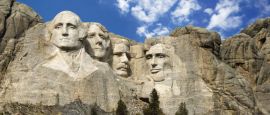United States of America History, Language and Culture
History of United States of America
The history of the United States is a story of bold beginnings, dramatic transformations, and ongoing reinvention. Long before European colonists arrived, the land was inhabited by Indigenous peoples, each with their own rich cultures, languages, and traditions. Today, Native American heritage is preserved in tribal nations, historic sites, and living communities across the country.
In the early 17th century, European settlers, primarily from England, Spain, and France, established colonies along the Atlantic coast and further inland. Tensions between the British crown and its American colonies culminated in the American Revolution (1775–1783), which led to independence and the creation of the United States of America in 1776. The new republic expanded rapidly westward, driven by a mix of ambition, migration, and displacement of Indigenous peoples.
The 19th century was marked by growth and conflict, including the Civil War (1861–1865), a defining struggle over slavery and states' rights that reshaped the nation. The abolition of slavery was a key turning point, followed by a long and ongoing fight for civil rights and equality. Industrialisation, waves of immigration, and territorial expansion transformed the U.S. into a global power by the early 20th century.
The United States played major roles in both World Wars, and emerged from the Second World War as a superpower, entering a prolonged Cold War with the Soviet Union. Domestically, the civil rights movement of the 1950s and 60s challenged systemic racism and expanded democratic ideals. In more recent decades, the country has experienced political polarisation, technological transformation, and cultural shifts—but remains influential in global affairs, economics, and pop culture.
Did you know?
• The U.S. has no official language. While English is the most widely spoken language in the United States, it is not the country's official language at the federal level. Some states have designated English officially, and others recognise multiple languages—including Hawaiian in Hawai'i and Spanish in parts of New Mexico.
• There's a town named "Boring" in Oregon, and it's officially twinned with "Dull" in Scotland and "Bland" in Australia. The trio proudly refer to themselves as the "Trinity of Tedium". Boring even hosts a "Boring & Dull Day" celebration each August.
• The world's longest cave system, Mammoth Cave, is located in Kentucky. It stretches over 400 miles (and counting). Visitors can explore subterranean chambers, echoing caverns, and underground rivers.
Language in United States of America
While the U.S. has no official language at the federal level, English is the most widely spoken. Spanish is the second most common language, spoken by millions of people, particularly in California, Texas, Florida, and parts of the Southwest. Other languages, including Chinese, Tagalog, Vietnamese, French, Arabic, and Korean, are also widely spoken in immigrant communities across the country.





 You know where
You know where
